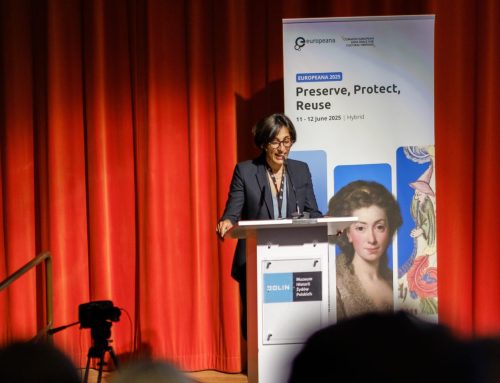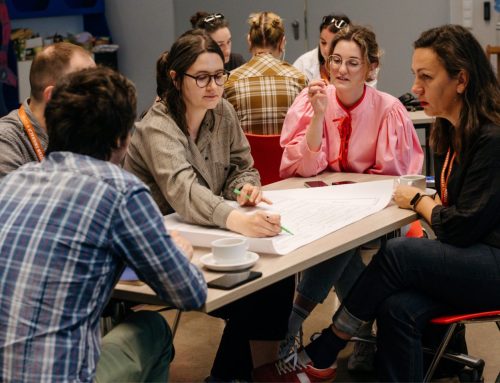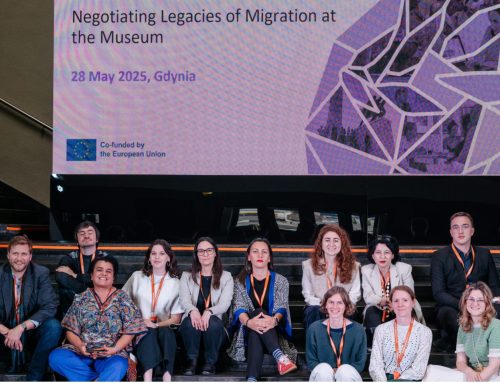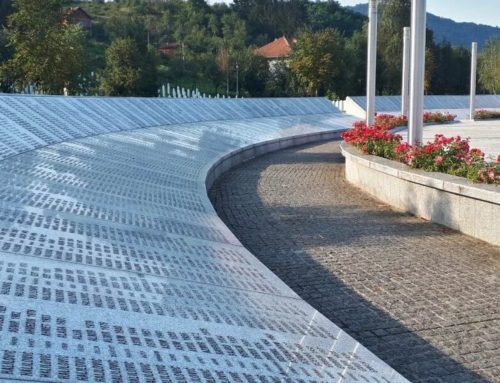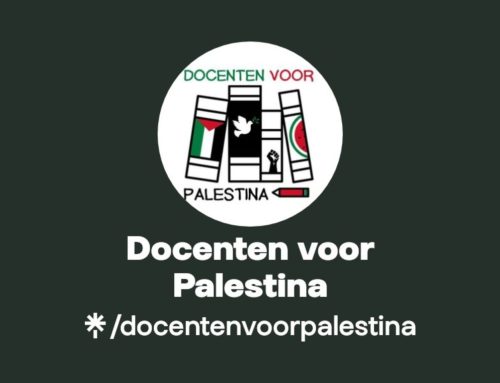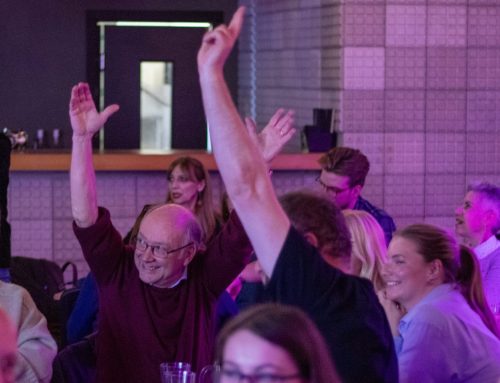Before delving into this topic, two remarks on the limitations of my reflections must be noted. First of all, the focus will lie mainly on narrative strategies as conveyed in textbooks. Although this does not really tell us what is happening on the ground in history classrooms, textbooks offer us a window into official national discourses. Furthermore, questions of feasibility will largely be ignored when pondering the type of textbooks that may be able to break vicious cycles of fear and suspicion so typical of conflict. From observing processes of negotiating new textbook-content, we know that you usually can choose between two evils: either you include government officials into the process early on and then risk that they impose thousands of little compromises on your project, something that has happened in Bosnia and Herzegovina, or you exclude them in order to protect the process but run the risk that the product will be banned from classroom use. This is exactly what has happened with the PRIME project in Israel and Palestine. As frustrating as these insights may be, they will be put aside and textbooks as a source of conflict resolution will be discussed without taking into account likely political restrictions.
Which textbooks trigger conflict?
Antagonistic narratives
Starting with the question of which textbooks trigger conflict, two points need to be made, one of which is well founded and probably not surprising at all while the second is more tentative and may pose a somewhat tough challenge to deep-rooted modes of thinking. Antagonistic narratives based on rigid binaries provide the necessary ingredients of conflict. The tricky thing about binaries is that they presuppose ‘the other’ even if (s)he is not mentioned. There is no hero without a villain and there is no victim without a perpetrator. Thus, there are at least two different types of binaries based on either heroisation or victimisation of the self. According to Bramsen & Poder (2018), there is reason to believe that self-victimisation has greater potential in triggering conflict than heroisation because fear and suspicions are much more powerful emotional weapons than pride. The one who is afraid of becoming a victim again is much more likely to be mobilised in what appears to be a defensive move than the one who is sure that she will be able to master all challenges ahead of her. In short, insecurity and the feeling of being exposed to threats creates a greater risk in terms of triggering conflict than an overemphasis on pride and superiority.
As convincing as the insight into the psychologically devastating effects of binaries are, they do not have much relevance in a world in which global textbook standards of paying superficial tribute to the idea of human rights have proliferated around the world. Blatant examples of vilifying ‘the other’ are few and far between. There are, however, watered-down versions of stereotyping ‘the other’, which may include silencing everything that does not fit into the picture one wants to draw. To name just a few examples: research shows that many people in Israel do not know very much about the harsh living conditions Palestinians face in the occupied territories; and the predominantly celebratory memory in the US causes the Smithsonian Institution, as the leading mnemonic institution, to place significant emphasis on Americans as liberators from evil while keeping almost silent about slavery and the extinction of Native Americans.
Furthermore, in many discussions a somewhat misplaced focus on stereotyping on the basis of ethnicity or religion can be observed. At the same time, social stereotyping is no less dangerous: Lebanese civic textbooks published after 1997 – praised for their orientation towards human rights education – would, for example, depict middle class families as being able to conduct a calm and reasoned dialogue whereas working class people are shown predominantly as being violent.
Cosmopolitan narratives
Based on recent insights from memory studies, it can be argued that even inclusive, cosmopolitan narratives can at times contribute to conflict. While this may sound completely unlikely at first, it is nonetheless accurate. Narratives which are too good to be true first fail to take root in the minds and hearts of people and then fail to prevent die-hard populists and nationalists from taking over. An almost forgotten example, besides former Yugoslavia, would be the Soviet Union. Hegemonic version of peace, love and harmony among the family of Soviet people neither hindered the beak-UP of the federation nor the break-OUT of deadly war and conflict.
Furthermore, at times, cosmopolitan narratives are so abstract that they appear to be disconnected from everyday life. A good case in point would be post-conflict textbooks in Guatemala where the rather vague concept of “culture of violence” is ascribed responsibility for mass atrocities and crimes. Very much in line with cosmopolitan approaches in citizenship education, the same textbooks emphasise individual agency and responsibility, apparently very much at the expense of talking about structural causes of violence.
Another “cosmopolitan” strategy of talking seemingly open-minded about violence while keeping silent about structures of inequality enabling such violence, is treating conflict as exceptional. As a rule, this goes hand in hand with an overreliance on ideals with little reference to realities on the ground. A rather typical example, for which the Georg Eckert Institute has empirical data on their effects, are Lebanese textbooks published after the curricular reforms of 1997 which strongly propagate a civic Lebanese identity, treat the civil war as an exceptional and somewhat abnormal event in the usually peaceful Lebanese history and put significant emphasis on individual human rights. Various studies prove that students showed low levels of motivation to learn from these books as content was perceived to conflict too heavily with the reality they know. Accordingly, the books did not affect any change in terms of the types of belonging expressed by students. Students continued to identify strongly with their religious communities. According to a study conducted by UNDP in 2008, i.e. 10 years after the implementation of the reforms, more than a third of the students believed they should vote only for parties recommended their own religious leaders.
In order to point out that this problem is not restricted to so-called fragile democracies, a similar kind of drawing of rigid boundaries between violence and injustices of the past and a present constructed as having overcome all these problems, can be found in US textbooks on African American history. Phenomena like racism are mentioned, but at the same time they are incorporated into a narrative of successfully eradicating all evils of the past.
In a preliminary attempt to sum up, two versions of presenting history at school can trigger conflict: history that bites and stirs up emotions; and history that bores and thus fails to encourage students to seriously deal with the wounds of the past.
Which books could contribute to overcoming conflict?
The second, and arguably more important question, is the question of which kinds of educational media is best equipped to challenge the sectarian and partisan views that have either triggered conflict or emerged as an outcome of it.
The one and only statement that can be made with the utmost certainty in a field which still suffers from a lack of empirically grounded studies, is rather simple and perhaps slightly frustrating: there will likely be no one-size-fits-all approach. Different societal situations and different types of students require different treatments.
It is of particular importance to map the levels at which significant differences may occur. The most important difference pertains to the role identities play in conflict. There are numerous conflicts rooted in powerful interests of looting, which are easily pursued in times of war-driven chaos. However, identities can be either the cause or the consequence of a conflict. Another crucial difference has to do with power differentials between groups. A prominent study on Israel has shown that Jewish students profit from a rational, enquiry-based approach to history teaching, which would generally aim at equipping students with the disciplinary tools of the historian and thus enable them to deal critically with sources and other kinds of historical evidence. However, the same study also indicated that Palestinians would first need emotional recognition of their own, usually marginalised, position before they could attempt casting a critical look on their own group.
Broad strategies for textbook content
All approaches to presenting textbook content to-date come with certain advantages and certain disadvantages. This has often been described, but it is hardly ever spelled out explicitly.
Textbooks based on a critical, enquiry-based approach at times suffer from a lack of emotional appeal and thus may not succeed in asserting themselves in competition with the more passionate voices of partisan groups. This has been observed, for example, in Northern Ireland. Giving voice to multiple perspectives may have a destabilising effect as it may be misunderstood as an invitation to moral nihilism. The same holds true for approaches which try to cater for emotional needs they may then not be able to control.
What can be learned from this is that the pro’s and con’s involved in any strategy have to be carefully weighed. In clear contrast to earlier debates, there is one crucial exception to the general rule of being context sensitive. Whereas there was a time when imposing a moratorium on any dealings with recent pasts was discussed as a serious option in post-conflict settings, today it is understood that silence in school and in the history classroom mainly contributes to reproducing the divides that initially triggered the conflict.
Agonistic memory as a potential solution
Having presented all these rather disturbing thoughts without really to a promising solution, the concept of agonistic memory is worth discussing. This concept recently emerged in the field of memory studies but can be easily adapted to history education.
Frustrated by the ease with which the antagonistic memories of populists, which have dominated discourses in the global North for some time, push cosmopolitan memories into the corner, Bell & Hansen (2016) have introduced the notion of agonistic memory. According to them, this type of memory should present us with a better, more effective antidote to the seductive power of neo-nationalism.
In their understanding, agonistic memory is based mainly on the juxtaposition of competing narratives on one and the same events. At first glance, that seems to be nothing more than the familiar concept of multiperspectivity that has long since informed debates in history education. However, upon closer inspection, the new concept of agonistic memory involves something more, something innovative.
The aim of giving voice to competing perspectives is not only to render history more complex and more nuanced, but to point to inescapable dilemmas. Students should thus not only learn to check the plausibility of competing narratives with reference to evidence, first and foremost, they should develop an understanding for the tough choices historical actors had to take during times of more adverse circumstances. Such an approach ties in perfectly with concerns that have been raised again and again by history educators; that students are frequently encouraged to make judgements too easily about people in the past without taking into due consideration the difficulties and challenges they might have faced.
To add a little more flesh and bones to this rather abstract argument, a promising example comes not from a textbook but from an exhibition at the Military History Museum in Dresden, Germany. The museum was re-opened in 2011 in a city that, at the time, experienced considerable right-wing violence. In the midst of such a disturbing social climate, the exhibition found a very innovative way of dealing with the aerial bombing of Dresden towards the end of the Second World War, a topic that was traditionally manipulated by the Far Right.
What is so interesting about the exhibition is that it moved beyond the classical comparison to aerial bombings of Coventry, Rotterdam and Wielun and instead presents opposing voices of witnesses for every city. Visitors can listen to a Jew who only survived the Holocaust because the bombing of Dresden saved him from being deported to a death camp; and get to know an American journalist who is full of regret that his fellow countrymen sunk to the moral level of the Germans. Visitors can learn about a young Pole who was severely traumatised by German occupation, but is nowadays nevertheless very committed to the cause of German-Polish reconciliation; and are faced with a Dutch man who, against the backdrop of similar experiences, claims that he still hates all Germans.
Again, it can clearly be seen how agonistic memory moves beyond traditional multiperspectivity. Where multiperspectivity often restricts itself to juxtaposing nationalistic and antagonistic narratives that are easily discarded, especially when it comes to conflict, agonistic memory introduces mutually exclusive voices, all of which appear to be convincing and legitimate. It thus contributes not only to a broadening of narrow stories, but also underlines the legitimacy of competing perspectives.
Last not least, by constructing dilemmas agonistic memory creates a sharpened awareness for the illusionary character of all claims to historical truth; supporting the understanding that no account could ever hope to be complete or definitive. All narratives are selective. All stories are the result of taking a certain perspective from which some things can be seen and others not.
As simple and convincing as this may sound, to transplant such an approach from the museum to the textbook creates several tough consequences: first, the difference between history and memory must be relinquished, so to the illusion that teachers can be neutral and objective; and second, it must be acknowledged that an enquiry-based approach creates not only a solution, but also problems, by implying that following a rational, disciplined approach we may arrive at superior conclusions.
Written by Dr. Barbara Christophe, Georg Eckert Institute for International Textbook Research
Further reading:
Bellino, Michelle J. 2014. Whose past, whose present? Historical memory among the postwar generation in Guatemala. In: James H. Williams, ed.: (Re) Constructing memory: School textbooks and the imagination of the nation, Rotterdam, 131-151.
Bull, A. C. & Hansen, H. L. 2016. On agonistic memory. In: memory Studies 9:4, 390-404.
Bull, A. C. & Hansen, H. L. 2019. A reply to Nathan Sznaider. http://www.unrest.eu/wp-content/uploads/2019/03/Final-Conference-Rome_Reply-to-Sznaider_Bull_Hansen.pdf
Hourani, Rida Blaik. 2017. A call for unitary history textbook design in a post-conflict era: The case of Lebanon. In: The History teacher 50:2, 255-284.
Loewen, James W. 2007. Gone with the wind. The invisibility of racism in American history textbooks. In: Idem: Lies my teacher told me: Everything Your American History Textbook Got Wrong, New York: 137-170.
McCully, A. & J. Reilly (2017): History teaching to promote positive community relations in Northern Ireland: tensions between pedagogy, social psychology theory and professional practice in two recent projects. In: C. Psaltis, M. Carretero & S. Cehajic-Clancy (Eds.): History Education and Conflict Transformation. Social Psychological Theories, History Teaching and Reconciliation. Cham: Palgrave Macmillan, p. 301-320.
McCully, A. (2012): History teaching, conflict and legacy of the past. In: Education, Citizenship and Social Justice, 7 (2), pp. 145-159.
Meyer, John; Bromley, Patricia; Ramirez, Francisco. 2010. Human rights in social science textbooks: cross national analyses, 1970-2008. In: Sociology of education 83:2, 111-134.
Paulson, Julia. 2015. Whether and how? History education about recent and ongoing conflict: A review of research. In: Journal of Education in Emergencies 1:1, 7-37.
Rohde, Achim: “Learning each other’s historical narrative: a road map to peace in Israel/Palestine?” In: Korostelina, K.V. & Lässig, s. (eds.): History education and Post-Conflict Reconciliation: Reconsidering joint textbook projects. London-New York: Routledge 2013, 177-191.
Shuayb, Maha. 2015. Human rights and peace education in the Lebanese civic textbooks. In: Research in Comparative International Education 10:1, 135-150.
Wills J. S. 2005. Some People Even Died: Martin Luther King, Jr., the Civil Rights Movement and the Politics of Remembrance in Elementary Classrooms, in: International Journal of Qualitative Studies in Education 18:1, 2005, 109-131.
Wineburg, Sam. 2001. Historical Thinking and other Unnatural Acts: Charting the Future of Teaching the Past. Philadelphia: Temple University Press.
Zembylas, Michalinos; Bekerman, Zvi. 2011. Teaching contested narratives. Identity, memory and reconciliation in peace education and beyond, Cambridge.



